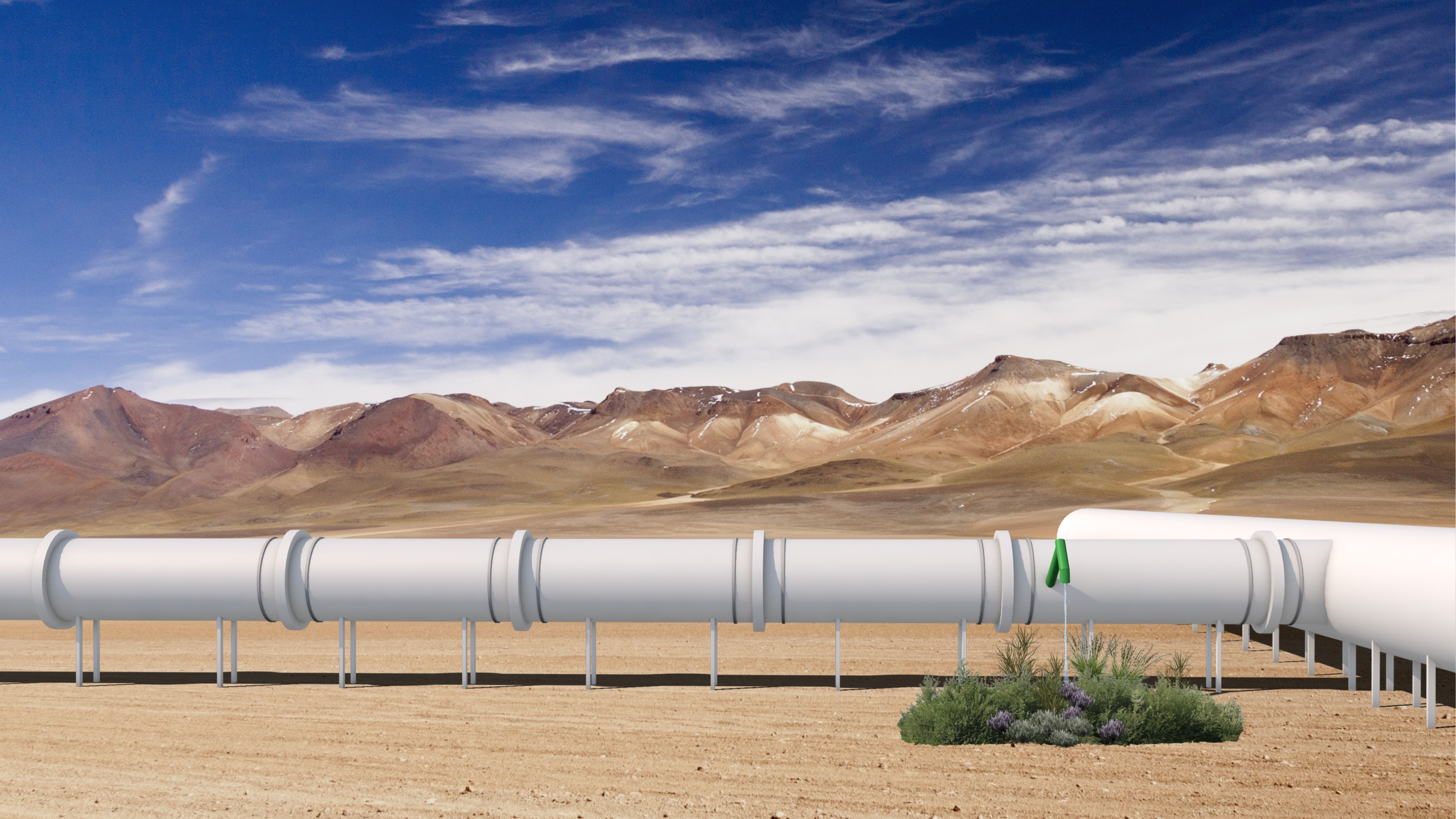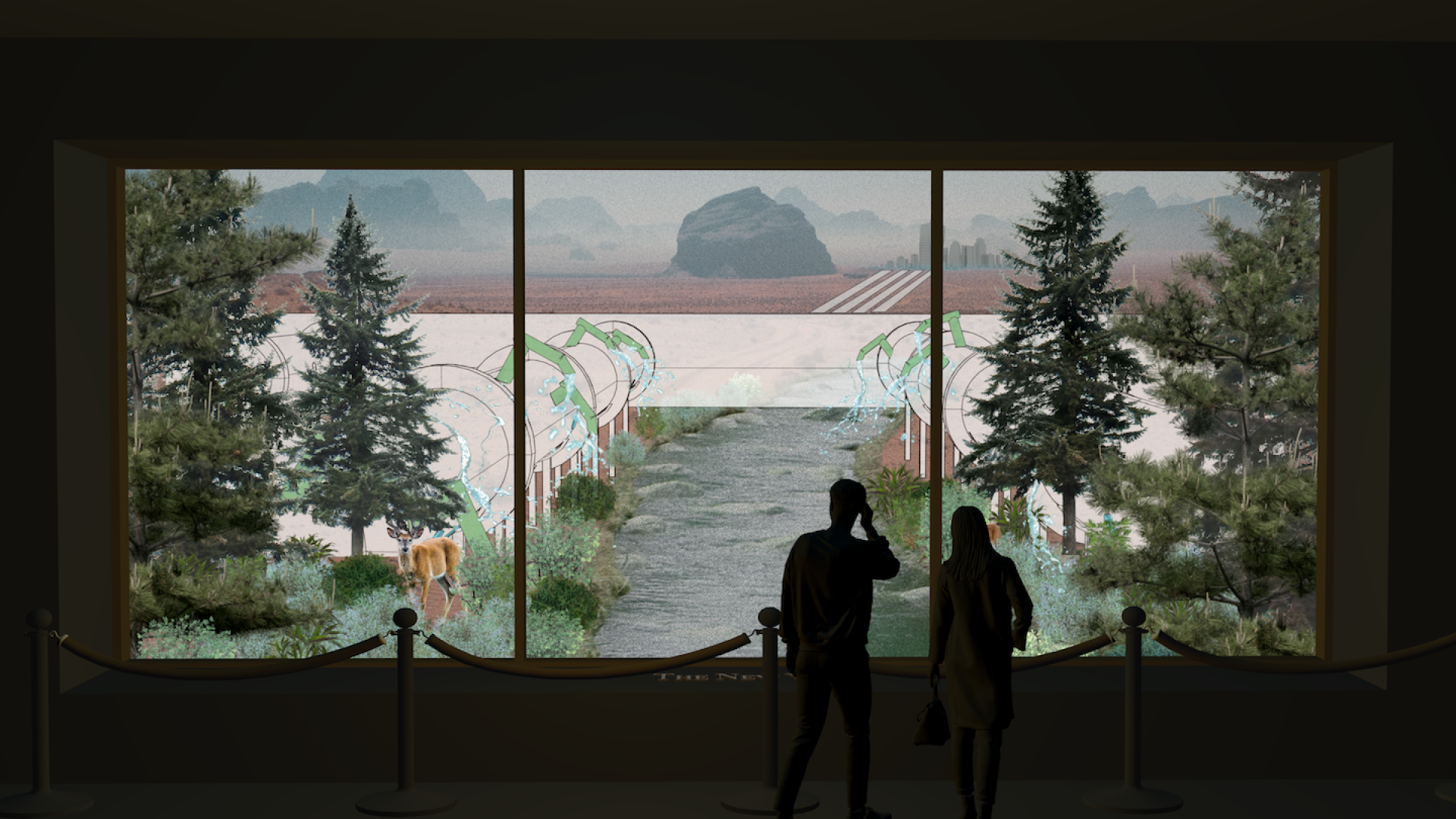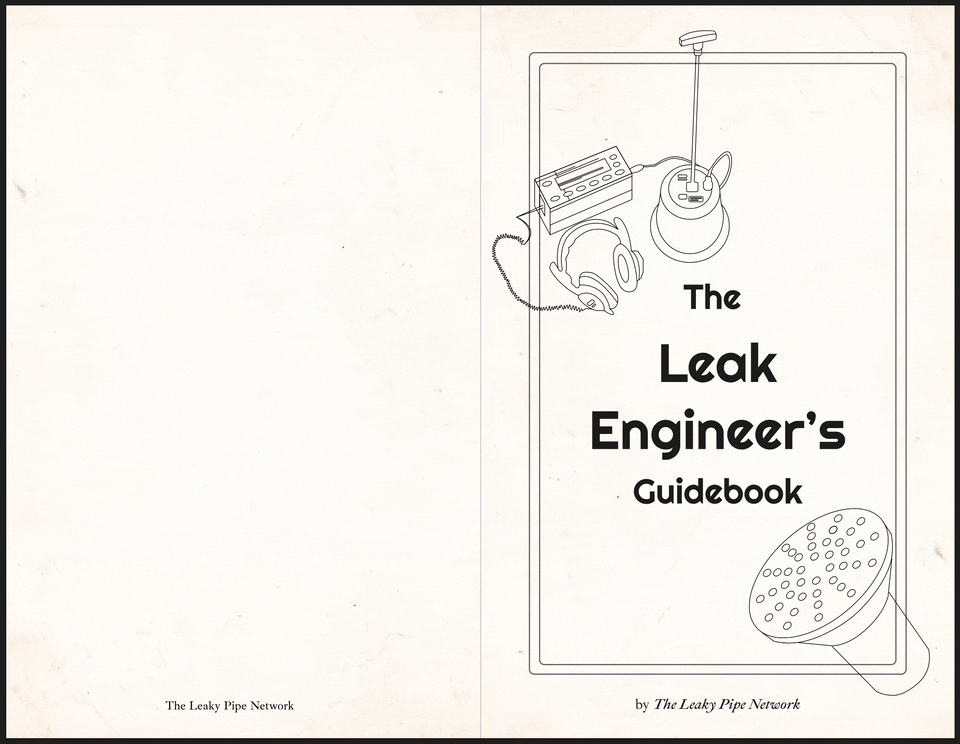SCENARIO 02 –
The Leaky Pipe
Network
The Leaky Pipe Network features a community of volunteers who intentionally create leaks in water infrastructure networks.

The Leaky Pipe Network
The goals of the Leaky Pipe Network are to rethink water infrastructure as not solely for human use – to support the growth of new ecosystems and to sustain them, particularly in locations where land and wildlife have been cleared in order to construct water pipes.
The main people responsible for installing leaks are Leak Engineers. This guidebook, included with the Leak Engineer’s field kit, provides information about the Leaky Pipe Network community, detailing the other roles that a network member might have, descriptions of the equipment included in their field kit, and guidelines for installing leaks.
The main people responsible for installing leaks are Leak Engineers. This guidebook, included with the Leak Engineer’s field kit, provides information about the Leaky Pipe Network community, detailing the other roles that a network member might have, descriptions of the equipment included in their field kit, and guidelines for installing leaks.
Context – On Rethinking Infrastructure
“Could there be a model where infrastructures don’t just care for humans, but also care for the ecosystems where they’re acting?”
– Tega Brain, Hack the Planet
Logic Magazine, Issue 9: Nature
Logic Magazine, Issue 9: Nature
The main question being asked through this work is:
“How might speculative reimaginings of everyday utilitarian objects and services shift human behavior towards prioritizing nonhuman natural entities?”
Water infrastructure encompasses the pipe networks, machinery and treatment operations that deliver drinkable water, as well as plumbing and irrigation systems. As the California Department of Water resources describes, “the benefits of our ‘gray infrastructure’ depend on the health of [our] “green infrastructure,” namely our watersheds and the ecosystems therein.” [2]
When it comes to water leaks, leaks are often seen as ‘costly’ - both in terms of the amount of water ‘lost’ to faulty pipelines as well as the amount of time and money it takes to fix them. Trained engineers often take expensive equipment into the field, helping them trace potential sources of leaks and patch them.
As it turns out, however, these water leaks are often homes to small ecosystems who rely on the water leaks to survive [1].
The Leak Engineer’s Guidebook
This guidebook, included with the Leak Engineer’s field kit, provides information about the Leaky Pipe Network community, detailing the other roles that a network member might have, descriptions of the equipment included in their field kit, and guidelines for installing leaks.
The Library of Leaky Fittings

The Library items are color-coded based on the water pressure each fitting is suited for.
The items available in the Library are color-coded according to the type of water pressure each fitting is suited for. They are open-sourced and designed in collaboration with the surrounding community. For example, these designs draw upon the knowledge of aquatic ecosystems experts, low and high scale irrigation specialists, and DIY-ers and makers who are hydroponics and aquaponics enthusiasts.
It is the Leak Engineer’s responsibility to understand what fittings work best for each situation, based on the environmental context. For example, some ecosystems may benefit from larger, higher pressure sources of water, while others may work best with by starting with a smaller, slow drip water source.
It is the Leak Engineer’s responsibility to understand what fittings work best for each situation, based on the environmental context. For example, some ecosystems may benefit from larger, higher pressure sources of water, while others may work best with by starting with a smaller, slow drip water source.
Some Years in the Future...
Some years in the future, the work of the leaky pipe network is on display at a museum.
Originally, this particular landscape used to be barren, cleared for the construction of the water pipes, but has since become a space for wilderness to thrive.
Originally, this particular landscape used to be barren, cleared for the construction of the water pipes, but has since become a space for wilderness to thrive.

I intentionally use the visual language of natural history museum dioramas here. These kinds of dioramas are part of a history of visual media that propagate visions of a pristine, untouched wilderness (see my thesis paper for more), which no longer exists.
Instead, I imagine how these dioramas might offer a different view of ‘wilderness’ to people - one that is inseparable from human presence and impact.
Instead, I imagine how these dioramas might offer a different view of ‘wilderness’ to people - one that is inseparable from human presence and impact.
NOTE:
It’s important to understand that natural history museums and the use of dioramas have a history of depicting settler-colonialist violence and have contributed to the dehumanizing and erasure of indigenous peoples. This is something that I learned in the process of making and through my reviews.
It’s important to understand that natural history museums and the use of dioramas have a history of depicting settler-colonialist violence and have contributed to the dehumanizing and erasure of indigenous peoples. This is something that I learned in the process of making and through my reviews.
